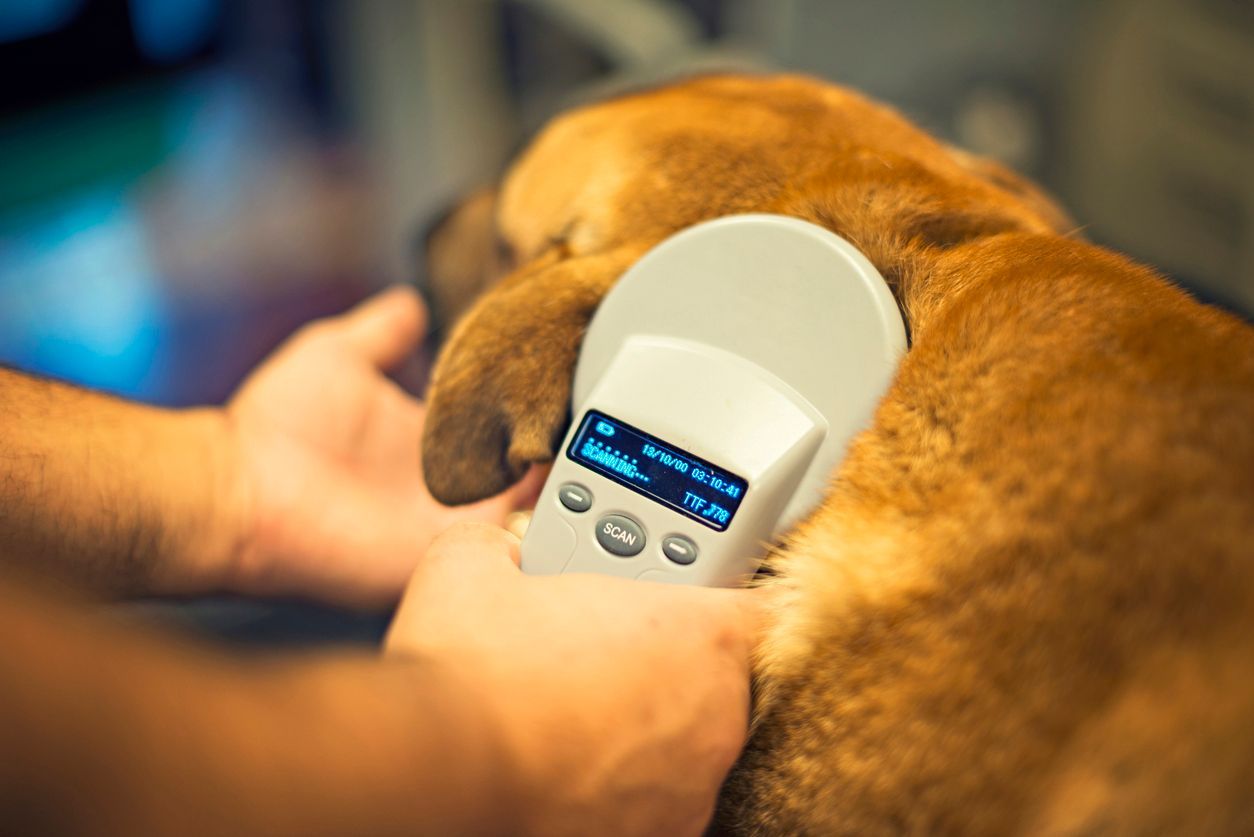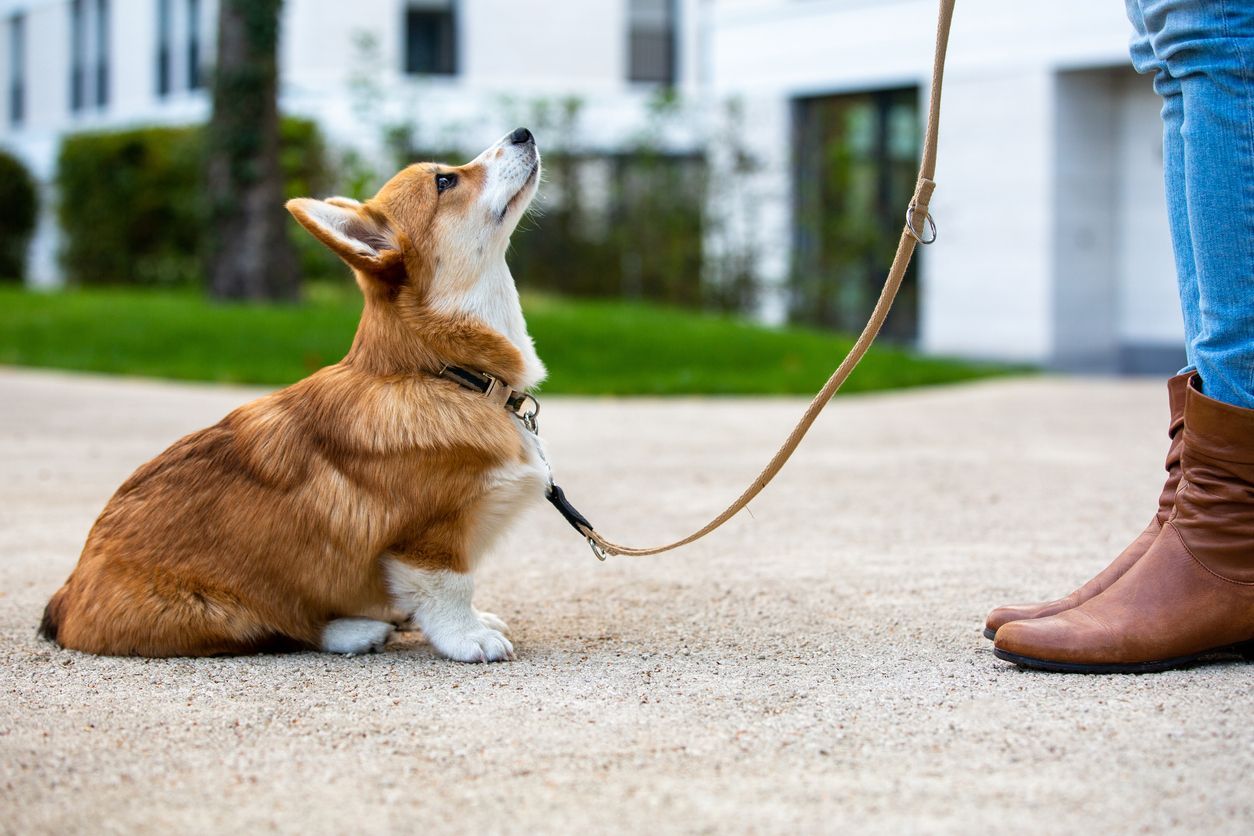How much does microchipping your dog or cat cost?

Many pet parents microchip their pets because it’s a cost-effective and easy way to keep them even safer. In some parts of the world, such as the UK and Australia, microchipping your pet isn’t a luxury, but a legal requirement of ownership.
Generally speaking, the cost of microchipping is relatively low. In fact, when compared to other repeat pet costs, such as food or grooming, a microchip is very economical and can save you significant stress should you ever be separated from your pet. Read on if you've ever wondered:
- What are the top reasons to microchip my dog or cat?
- What is a microchip?
- How do I know if my pet is microchipped?
- What can a microchip do and not do?
- How much does microchipping my pet cost?
Microchipping your pet is an investment in their safety that only costs around $20-$50 depending on a variety of factors, and your resulting peace of mind is worth the price.
Top reasons to microchip your dog or cat
There are plenty of reasons to microchip your furry friend.
1. Identification
The main function of a microchip is to ensure that your pet is always identifiable, whether they’re wearing a collar or not. Remember, collars and tags can easily become lost, especially if an animal is adventuring outdoors, gets into a fight, or loses weight.
2. Proof
A microchip is your best evidence that no one else owns your pet. This is crucial in cases of missing or stolen pets. Unlike collars, a chip cannot be easily removed or altered.
3. Retrieval
Once linked to the pet ownership database, the microchip then serves as the key to supplying a pet’s owner details. This means that you can be contacted promptly, and your furry friend can be returned swiftly.
4. Travel
Another reason to microchip a pet is to allow for more international travel options. Without this means of identification, some countries cannot allow your pet entry.
Now that you know why it’s important to microchip your pet, let’s take a look at some of the top questions pet parents have when it comes to microchipping.
What is a microchip?
A microchip is a very small, integrated circuit that feels hard under the skin and is about the size of a grain of basmati rice. Each chip has its own unique number, but holds no additional information. The chip is linked to a database that contains information about the animal, including date of birth, address, and the contact number of the owner.
Interestingly, a pet microchip does not have a battery, which means there’s no risk of the microchip dying. Rather, the microchip is activated only when a microchip scanner emits radio waves over it.
Microchip scanners are something every pet clinic, animal control center, rescue center (and even some breeders) have. In just a few seconds of scanning, the microchip number can display on a small screen. The person scanning the chip can then look up this unique number on various online databases and find a match.
Most countries have a few well-known websites containing larger databases where the data from smaller companies has been compiled. You can head to these larger websites if you’re unsure where your dog’s microchip was registered.
How do I know if an animal is microchipped?
Though you can sometimes feel a microchip under the skin of slender dogs and cats, this is not always easy to do. Realistically, the only way to know for sure if an animal is chipped is to have them scanned. Most people go to their local vet to have this done. You can then use any microchip number found to determine who the pet is currently registered to.
What can a microchip do and not do?
As mentioned earlier, a microchip is a very basic piece of technology that can only hold a single, unique number. In a nutshell, it’s a simple transponder.
It’s a common misconception that a microchip can tell you the location of your pet at any given time. A microchip is not a GPS tracking device. There are GPS trackers available for pets, but these are usually not supplied by vets. They are larger than a microchip and are attached to collars. The cost of a pet GPS tracker ranges from CAD $83 to CAD $207.
A microchip also does not hold any medical details or records for the animal. It does not tell you, for example, if a pet is neutered or up to date with their rabies vaccine.
Importantly, the chip also doesn’t contain any information about the pet or their owner. If a microchip is never registered and the pet’s details are never entered in the database, the chip is of little use. This is why you should register your pet’s details on a database as soon as possible after the chip has been implanted or detected. Some vet clinics do this on your behalf, but many do not. In this scenario, simply follow the directions that come with the chip.
Can a microchip ever break or malfunction?
It’s very rare for a microchip to malfunction or stop working, and most chips last the lifetime of your pet. This is why your vet should check your pet’s microchip during every routine appointment. Should a chip not be detected, a new microchip can be inserted for around CAD $28-CAD $69.
As a pet ages, it’s common for their microchip to move or “migrate.” While microchips are usually placed in the scruff of the neck or between the shoulder blades, they do tend to move around a bit. Those who scan dogs and cats know this and usually check the body of an animal if a chip isn’t immediately found.
Do microchips hurt animals?
Inserting the chip likely does cause some level of discomfort in animals. Luckily, the pain is very short-lived and most vets are quick to reward pets with treats immediately after inserting the chip. Once the chip is inside your pet, it causes no discomfort or aftereffects.
Some owners choose to wait until their pets are under anaesthetic during their neutering surgery to insert microchips so they can be sure their pet feels absolutely no pain. However, doing so means there is a period of time when your pet is very young and not microchipped, which is a risk.
Though it is rare, some pets develop a swelling or an infection shortly after the microchip is inserted. This is something that a vet should see as soon as possible, as treatment is frequently required. Connect with a vet online if you discover swelling or discharge in the area of your pet’s injection site. You can review photos and videos with a veterinarian from the comfort of your home, and they can assess the issue and discuss applicable at-home care options or refer you to your local clinic if needed.
Can microchips fall out?
Although unlikely, it’s not impossible for a microchip to fall out immediately after insertion. The chip creates a small hole and, in rare cases, can migrate back outside of the body moments after it is put in. This is why your vet should always scan for the chip before your pet leaves the clinic after the insertion surgery.
Once the skin has healed over (2-24 hours for a puppy or kitten, 1-2 days for an adult) the microchip will not fall out.
What if I rehome my dog or cat?
If you have to rehome your pet, you should alert the company that holds the details for your pet’s microchip. The company can then supply the new owner or shelter with a code that can be used to update the ownership details. Changing ownership details for your pet’s microchip often costs around CAD $14-CAD $28.
Take note: if you rehome your pet and don’t ensure that ownership details are changed, you could be liable for any damage the animal causes in the future because you would be seen as the legal owner. Considering you likely no longer have pet insurance, this could end up being an expensive mistake.
My pet was already chipped when I got them; what now?
When you take home a pet that is registered in someone else’s name, you should contact that person. They can then contact the microchip company and ask for the ownership details to be changed. If you are unsure how to locate the prior owner, their details are in the microchip database and the company hosting the database should be able to contact them on your behalf.
Sometimes, the information supplied can be confusing and you may be unsure who to contact. Vets are very experienced in this area and can use the information you have to determine who the chip is registered to while also re-registering the pet under your name. If you’d like assistance with this, you can book an appointment with an online veterinarian that fits your schedule from the comfort of your home.
How much does a vet charge to microchip a pet?
The average cost of microchip insertion is about CAD $28-CAD $69, which includes the insertion fee and the price of the chip. This price varies from clinic to clinic. There is no annual fee for using the pet database.
Some vets include the cost of a microchip in care plans that also cover the costs of things like vaccines, parasite prevention, and annual health checks. Care plans or packages cost about CAD $28-CAD $69 a month, depending on the size of the dog.
If my pet is chipped, should I still use a collar and name tag?
While a microchip is the best means of permanently identifying an animal, it is still useful to have a collar and tag. This is because if a member of the public finds your pet, they can contact you without having to find someone who can use a microchip scanner. Plus, having two ways to identify your pet gives them an even better chance of being reunited with you if lost.
Keep in mind that many municipalities require licensing of outdoor dogs and sometimes cats, which must be displayed on their collar in addition to other information such as the owner’s name, address, and phone number.
Key takeaways
- Although there’s a small fee to microchip your pet, most pet owners agree it’s 100% worth it. A microchip can reunite you with your furry friend if they go missing, making it an invaluable piece of technology.
- Remember to always keep the microchip details up to date as soon as you move or get a new phone number.
- Have your pet scanned for a microchip at least annually to ensure it’s still present and working as expected.






